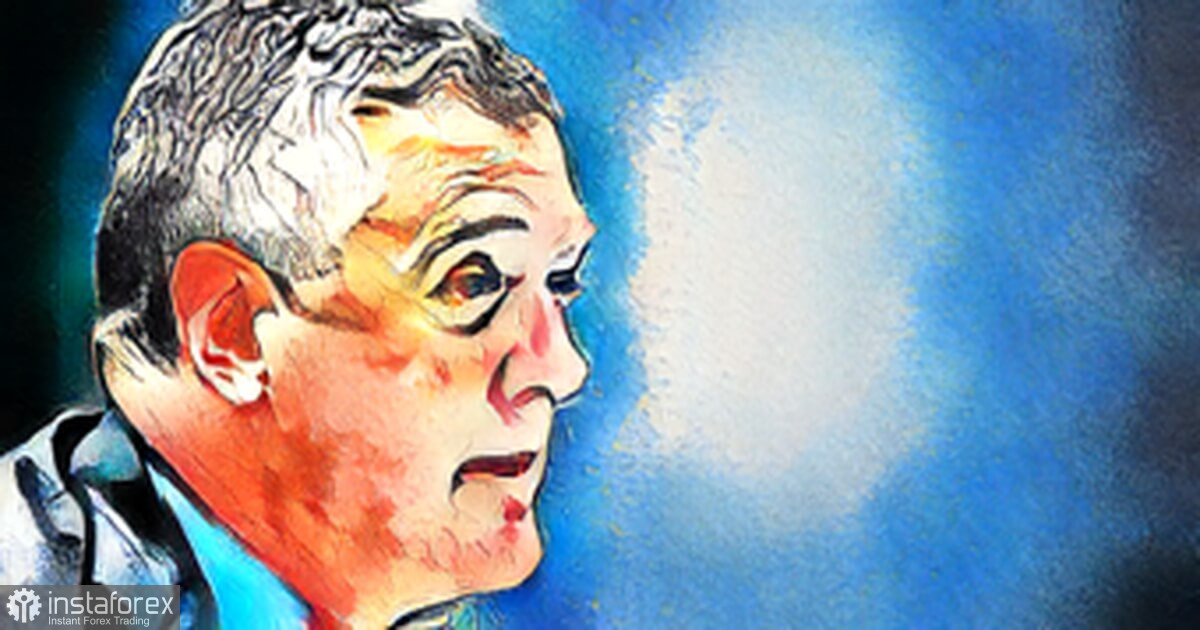St. Louis Fed President James Bullard warned yesterday that the regulator's credibility was on the line and said they need to continue raising interest rates. "This is a serious problem and we need to be sure we respond to it appropriately," Bullard told an economic conference in London. "We have increased the policy rate substantially this year and more increases are indicated."
As a reminder, the US central bank announced a 75 basis point rate increase for the third straight meeting in September, bringing the target for the benchmark federal funds to 3.25%. Median projections show rates would reach 4.4% by the end of 2022 and 4.6% in 2023, a more hawkish shift in the dot plot than anticipated.

Citing the Fed's recent forecast, the St. Louis Fed chief also suggested that interest rates should be at 4.5% or at least 1 percentage point higher than the current rate. "We have just now gotten to the point where we can argue we are in the restrictive territory," James Bullard stated.
"I think we need to stay at that higher rate for some time to make sure we've got the inflation problem under control," he referred to the rate path.
Fed officials have recently hinted they expect another 1.25 percentage point rate rise at the final meetings in November and December. Investors anticipate the fourth straight 75 basis point rate lift at a meeting on November 1-2.
Bullard also disagreed with the critics of the Fed who blame the regulator for pushing the economy to a state similar to the one in 1970. He said that the current market pricing of Fed intentions means tightening has happened well in advance of actual rate hikes, unlike the Paul Volcker-led central bank. "I think that that means we have a better chance of success," he concluded.
He cited the experience of the 1994 tightening led by Alan Greenspan. Back then, rates rose by 3 percentage points without a recession, setting the stage for a "stellar second half of the 1990s."
The greenback strengthened against a row of risk assets, following Bullard's statements.
Currently, trading activity on EUR/USD is seen near the yearly low. Today, bulls should protect 0.9550 support, which could be challenging given disappointing macro results. The euro will plummet to the new yearly low of 0.9500 if it breaks through 0.9550. Meanwhile, in case of a breakout through this barrier, targets will stand at 0.9460 and 0.9405. It will become possible to access any prospects for the asset when bulls return to 0.9600, with the target at 0.9640. More distant targets are seen at the highs of 0.9700 and 0.9770.
Pressure on the sterling is gradually rising, which reflects the current weakness of the trading instrument. Speaking of a correction, bulls could become more active by the middle of the week when the price gets back to the level of 1.0700. In case of a corrective move to the upside, targets are seen at the highs of 1.0760 and 1.0830. A more distant target stands at 1.0920. If the pressure remains strong, bulls should consolidate above 1.0630. Otherwise, a mass sell-off could start, and the pound could drop to the lows of 1.0570 and 1.0520.
 English
English 
 Русский
Русский Bahasa Indonesia
Bahasa Indonesia Bahasa Malay
Bahasa Malay ไทย
ไทย Español
Español Deutsch
Deutsch Български
Български Français
Français Tiếng Việt
Tiếng Việt 中文
中文 বাংলা
বাংলা हिन्दी
हिन्दी Čeština
Čeština Українська
Українська Română
Română

